If you’re visiting Amsterdam for the first time, it’s important to know where to find the best Instagram-worthy locations! From canals lined with tall, narrow buildings to sunny bridges overlooking picturesque waterways, Amsterdam has something for everyone. But with over 90 islands and over 1,500 bridges, it’s important to know where to look! Follow our guide to the best Instagram Spots in Amsterdam to find the perfect photo-op!
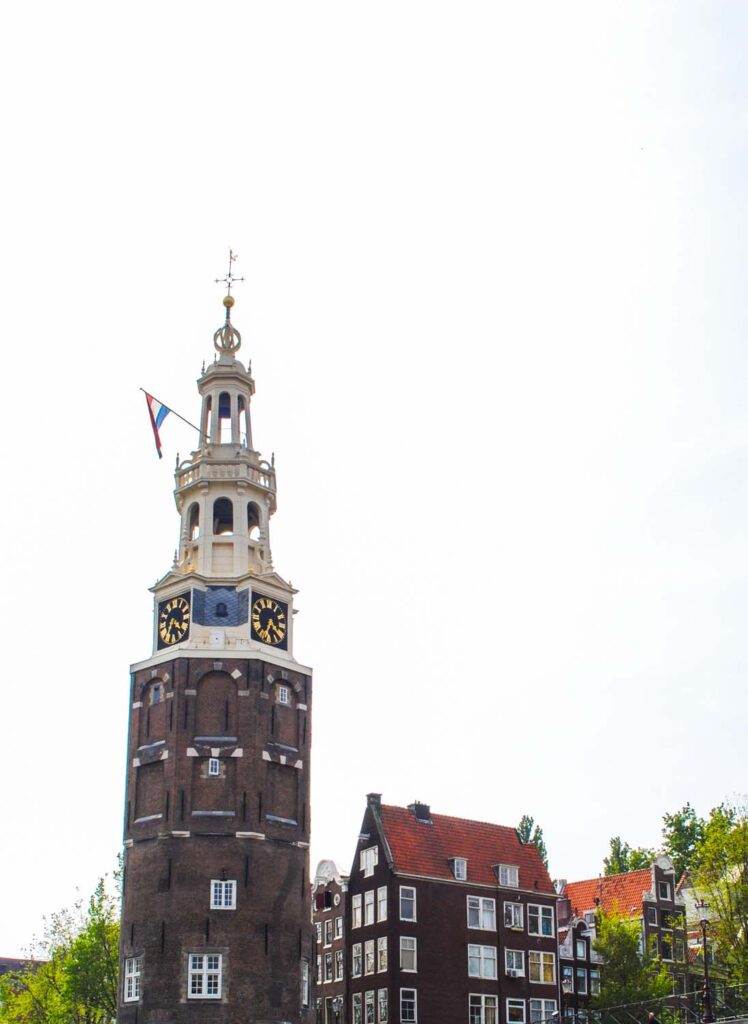
#1 Damrak Dancing Houses
The ‘Dancing Houses‘ are truly one of the most iconic images from Amsterdam. Everything from postcards to clay magnets, ceramics and textiles are covered in images of these historic houses. Their unique narrow gabled exteriors face out onto the mouth of the majestic Amstel River. The design of these ‘grachtenpandens,‘ otherwise known as “canal houses,” was developed in the 17th century. The dancing houses were built for wealthy merchants who would use the lower levels along the canal as their storage warehouses. Then the upper levels were used as their living spaces. But the design of these tall and narrow houses was not originally an aesthetic choice. Back then taxes were calculated based on the width of the house and not the height. So the answer to building a large house without high taxes as to build upward.
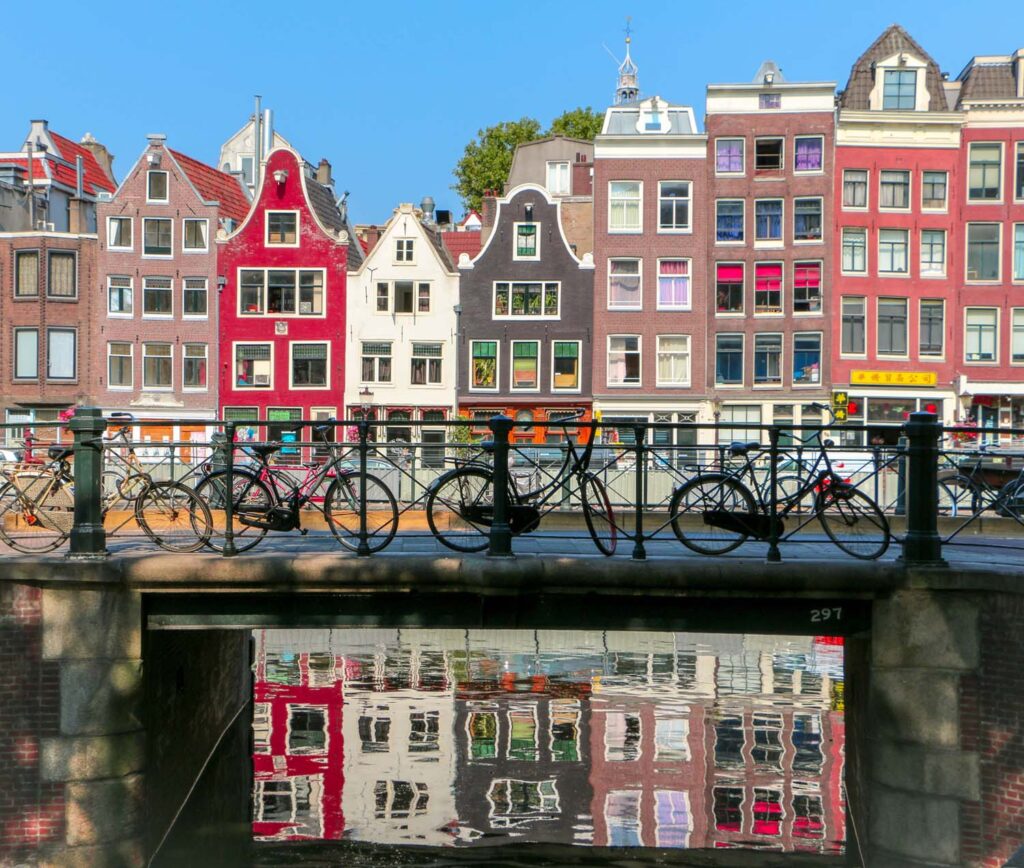
The reason they are now called ‘Dancing Houses’ is because of their uneven and crooked appearance as if they are dancing about. When these homes were constructed on the canal the foundations were built on piles. “Piles” were huge wooden poles that were drilled deep into the wet soil. But over time, the stakes have begun to shift, resulting in this rather quirky and seemingly uneven appearance.
#2 Openbare Bibliotheek Amsterdam Rooftop Terrace
The Openbare Bibliotheek Amsterdam (or OBA) is the coalition of all the public libraries in Amsterdam. And their flagship location can be found just east of Amsterdam Central Station. The OBA Oosterdok or Central Library was built in the early 2000s and is one of the most amazing modern libraries in Europe. The building is spread out over ten floors and in addition to millions of books, it includes an auditorium, an exhibition room, Library Museum, and 2000 parking spaces, just for bicycles!
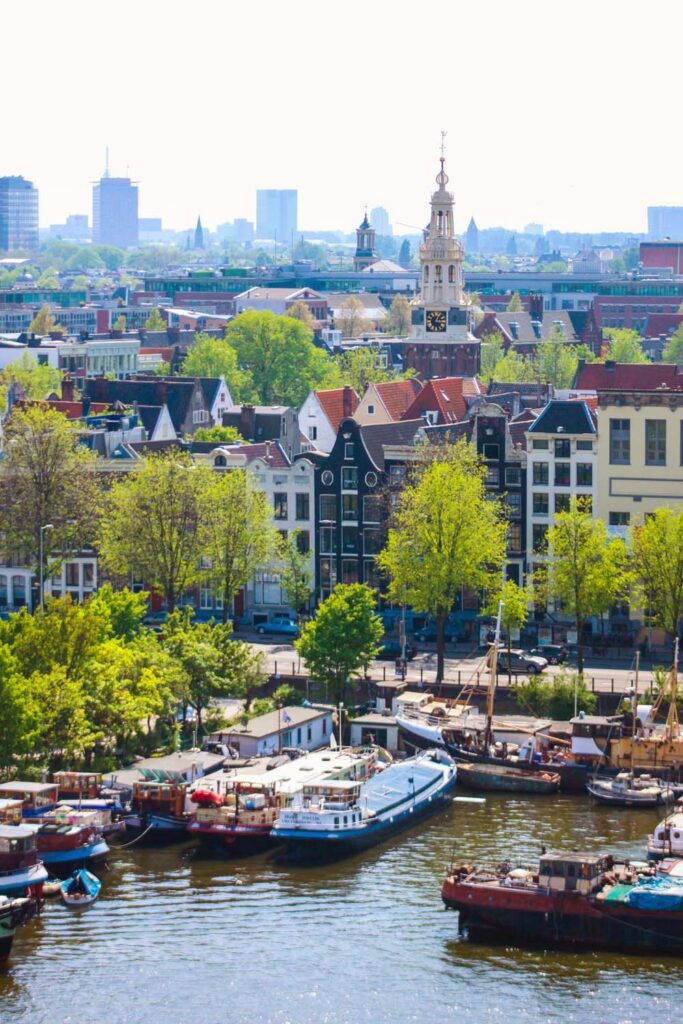
But the best place to visit for tourists is La Place Restaurant. This is the library’s own rooftop restaurant terrace located on the 7th floor. From up here, you have a magnificent view of the whole of Amsterdam – probably the best panoramic view in the city! And best of all, so many people don’t even know it up here! As it caters to lots of students who come here to study, the restaurant is reasonably priced and even serves alcohol to boot! It’s the ideal place to grab a spot of lunch and enjoy a Dutch beer in the sunshine while looking out over the city.
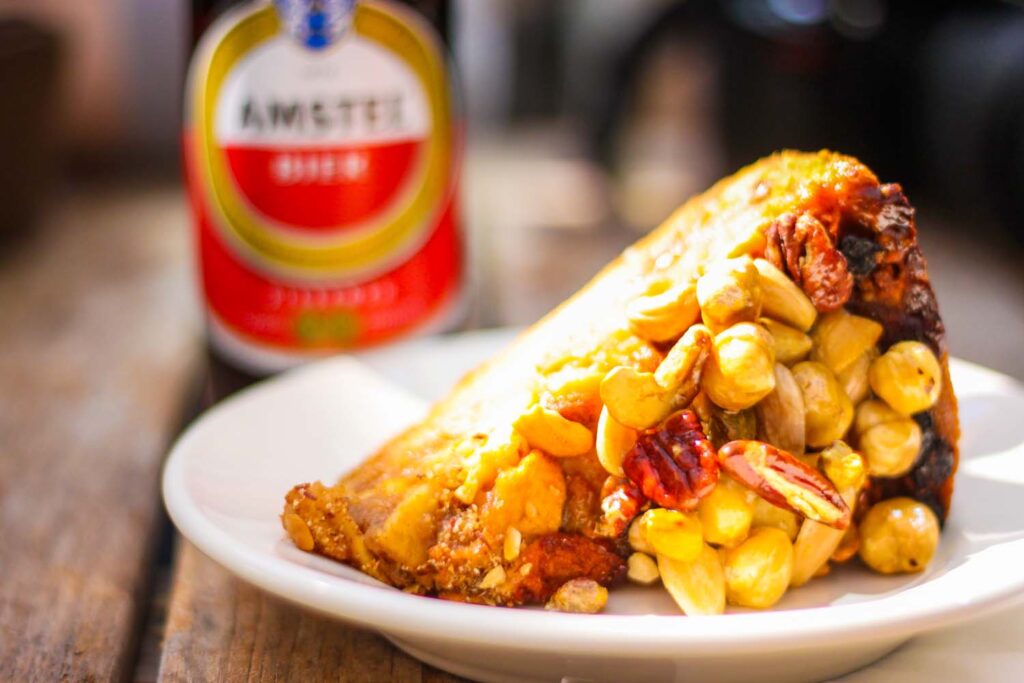
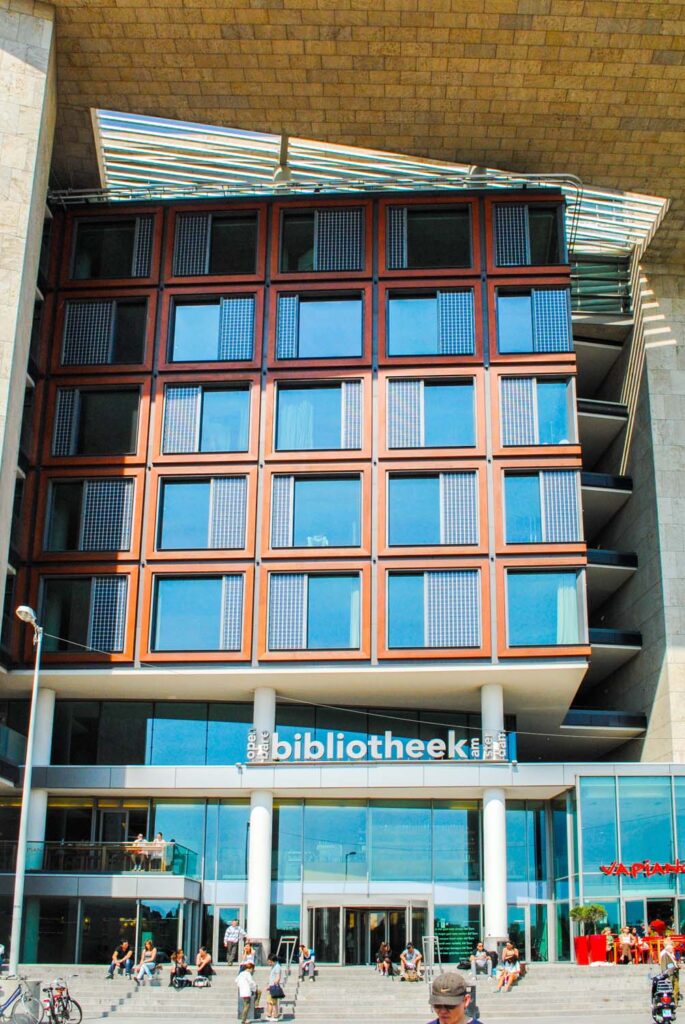
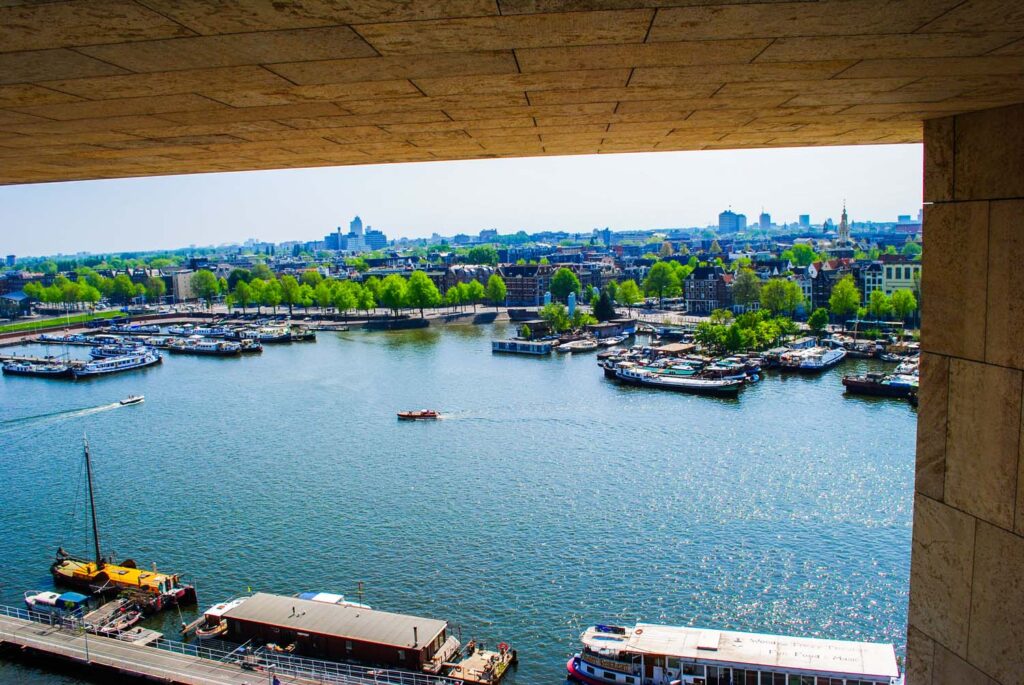
#3 Keukenhof
The Keukenhof is known as the Garden of Europe, and if you’ve ever had the chance to walk through their green fields, you will truly understand why. From March to mid-May, millions of rainbow-coloured tulips (4.5 million to be exact) bloom over the 32 hectares of gardens inside. They create what can only be described as a blanket of fantastical aromas and ethereal colours which cover the Dutch countryside.
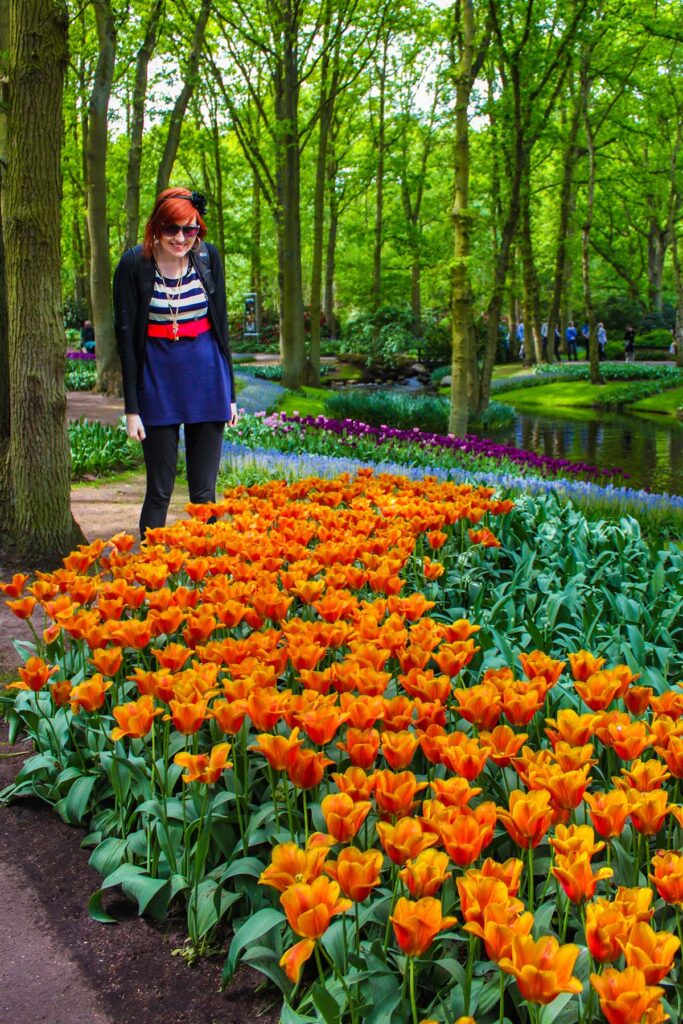
This kind of spectacle is unmissable if you’re visiting Amsterdam. I would even say you should try to plan your trip around the bloom timeline. Tulips are perhaps one of the most famous icons of the city and seeing them in person, in such incredible variety, is a once-in-a-lifetime experience. The flowers were first brought to Europe in the 16th century and caught on in popularity in the Netherlands where their hearty stalks grew well despite the inclement weather. Tulips became a status symbol, and in the 17th century, they were worth their weight in gold, literally! A picture with these valuable flowers is still one of the best ways to show off your visit to Amsterdam!
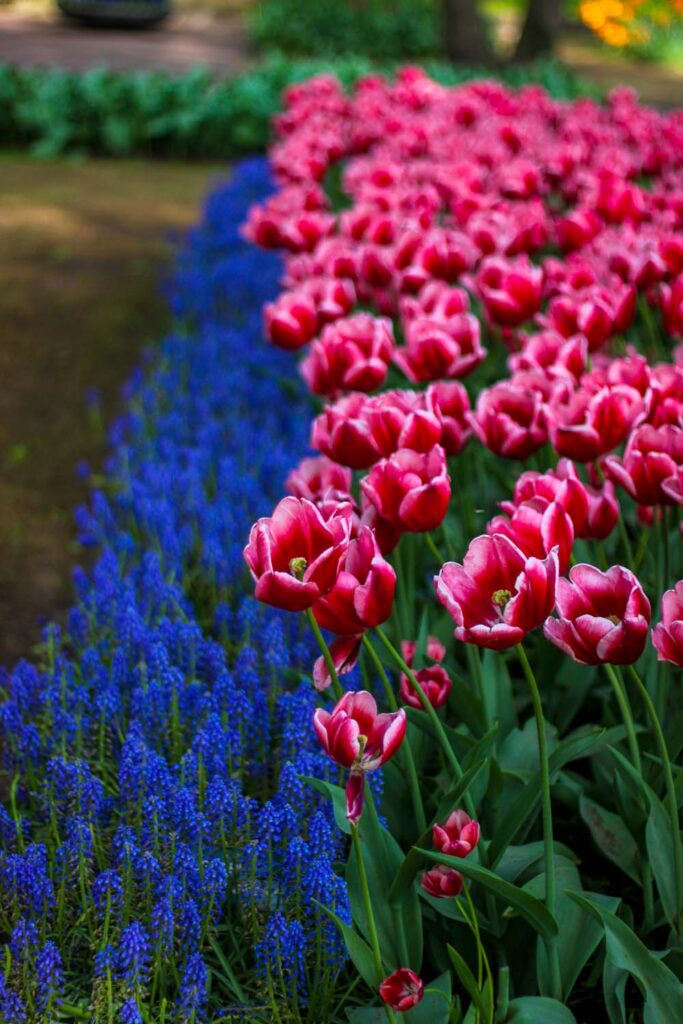
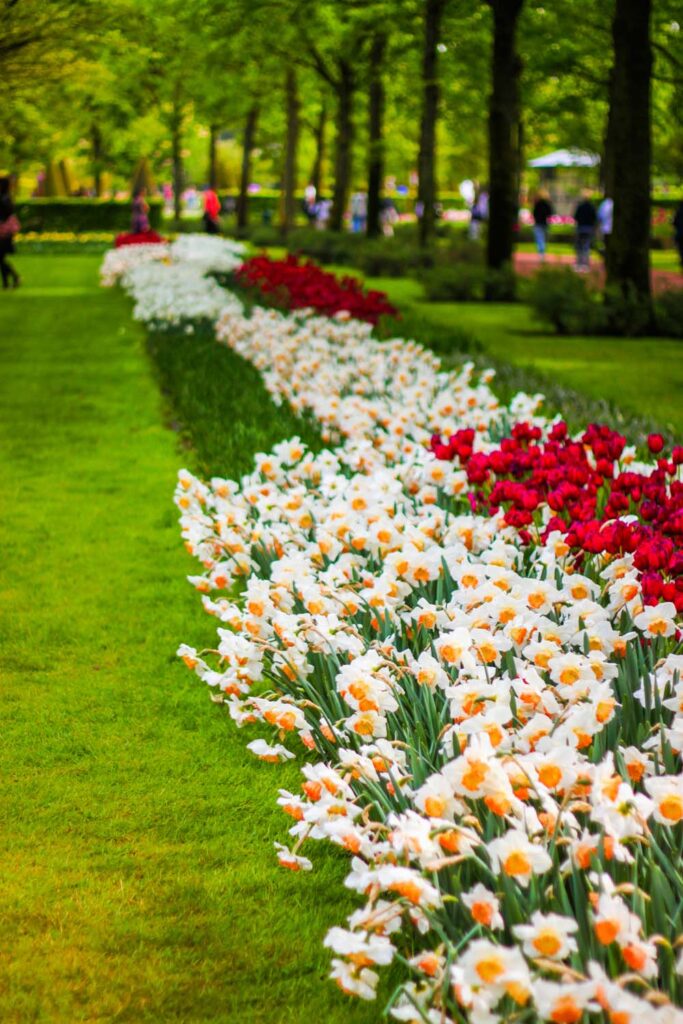
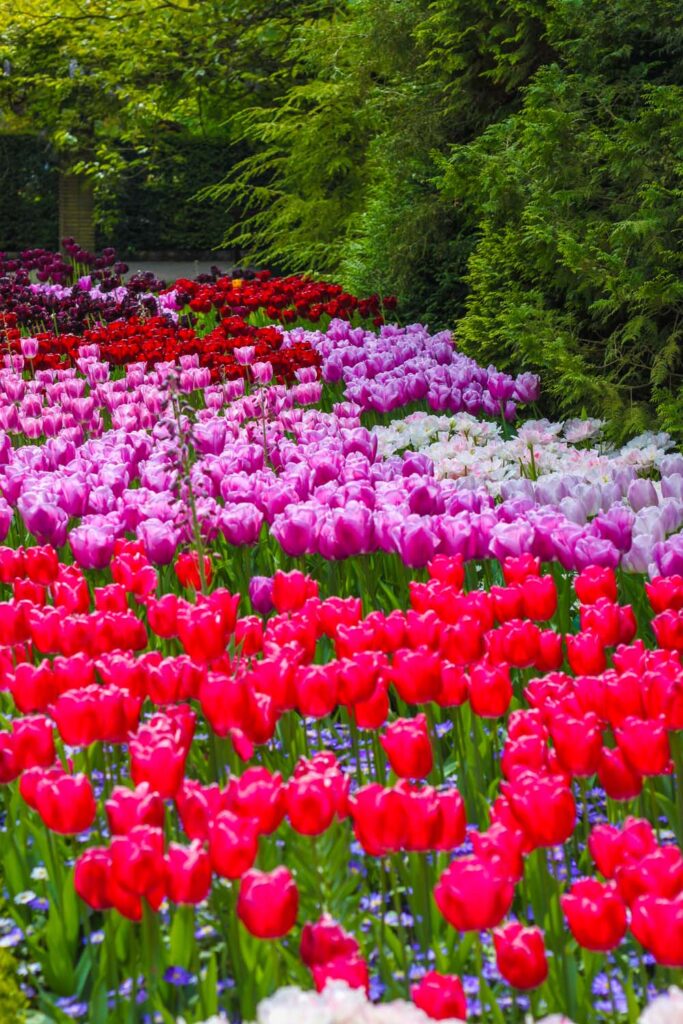
#4 Rijksmuseum Bike Under Pass
The Rijksmuseum is the crowning glory of the museum square district and is home to some of the Netherlands’ greatest artists. The Dutch National Museum originally opened in 1798 in the Hague. Back then, the Hague was the seat of the Netherlands’ government. When the museum moved to Amsterdam, a new design was commissioned by Pierre Cuypers to house the artistic treasures. His richly decorated gothic and Renaissance-inspired structure won over the public and still do this day is seen as one of the greatest architectural marvels in Holland.
Sadly, 20th-century modernizations essentially whitewashed the interiors of their original character. So in 2003, the historic society started on a ten-year-long renovation to restore the museum to its former glory. During the renovation, they also managed to transform the gothic vaulted underpass to allow pedestrians and bikes to anjoy the splendours of the building. This underpass is such a stunning location to see for yourself and if you can avoid the traffic early in the morning it makes for a great photo spot!
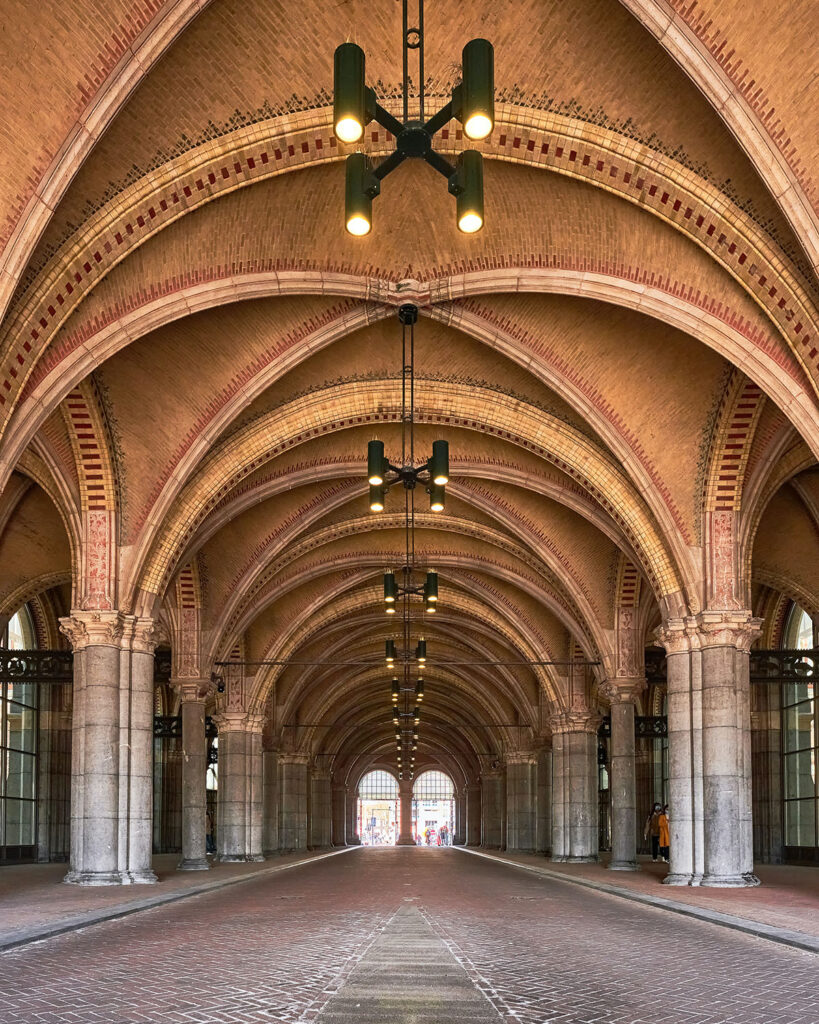
#5 Cuypers Library
The Rijksmuseum is a captivating place to visit but for me, the real star of the show is the library! The Cuypers Library inside the Rijksmuseum is one of the most fantastical libraries in the world. Stepping in here feels like walking into a movie set or the Wizarding World of Harry Potter. Stacks and stacks of books climb up the walls surrounded by arching tiled vaults. The library is the largest and oldest historical library in the Netherlands and has been preserved for the ages to feel like a slice of history. Thankfully, the library is open to students, art historians and also the general public! There is no bad spot to take a picture here, as the towering bookshelves make the perfect backdrop.
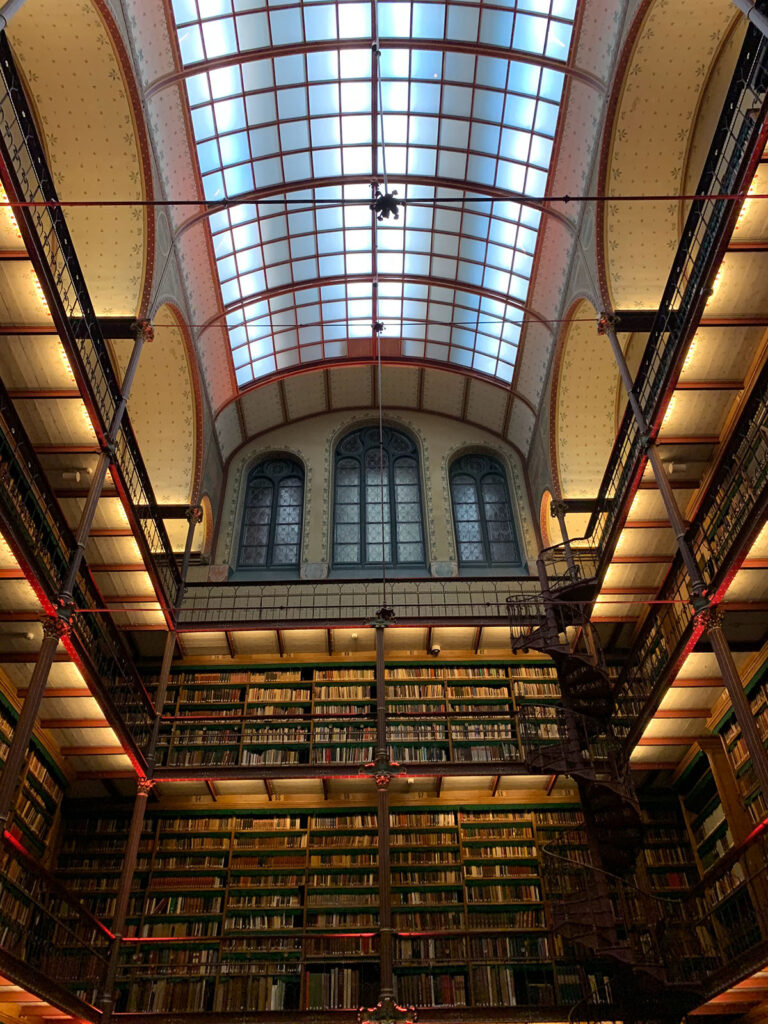
Alkmaar
If you’re into cheese, then you must head to Alkmaar. Here on Friday (and sometimes Tuesday) mornings, you’ll find the oldest cheese market in Amsterdam, opened since 1365! Alkmaar is only 30 minutes away from Amsterdam on the train and well worth the short journey. Hundreds of wheels of cheese are carried out to sell to both residents and restaurants alike. Cheese haulers carry around their GIANT wheels of cheese for the marvel of the on-looking tourists. But they don’t use their hands. Instead, they carry the mammoth wheels on enormous green skies. Two haulers are tied to either end and look as if they are gliding around the market. Who doesn’t love a photo against the great wall of cheese?!
The Jordaan Neighbourhood
The Jordaan neighbourhood has quickly become one of the most expensive and luxurious locations in the Netherlands. The streets are home to upscale art galleries, fanciful boutiques, and bustling marketplaces. The area has been popular with the art community for a century, and Rembrandt himself spent the last years of his life in his house on the Rozengracht canal. The backdrop of rows and rows of tightly packed houses makes for the most fantastic patterned backdrop! The houses and canals in this area seem to be less frequented by tourists so it’s a great spot to get away from the crowds.
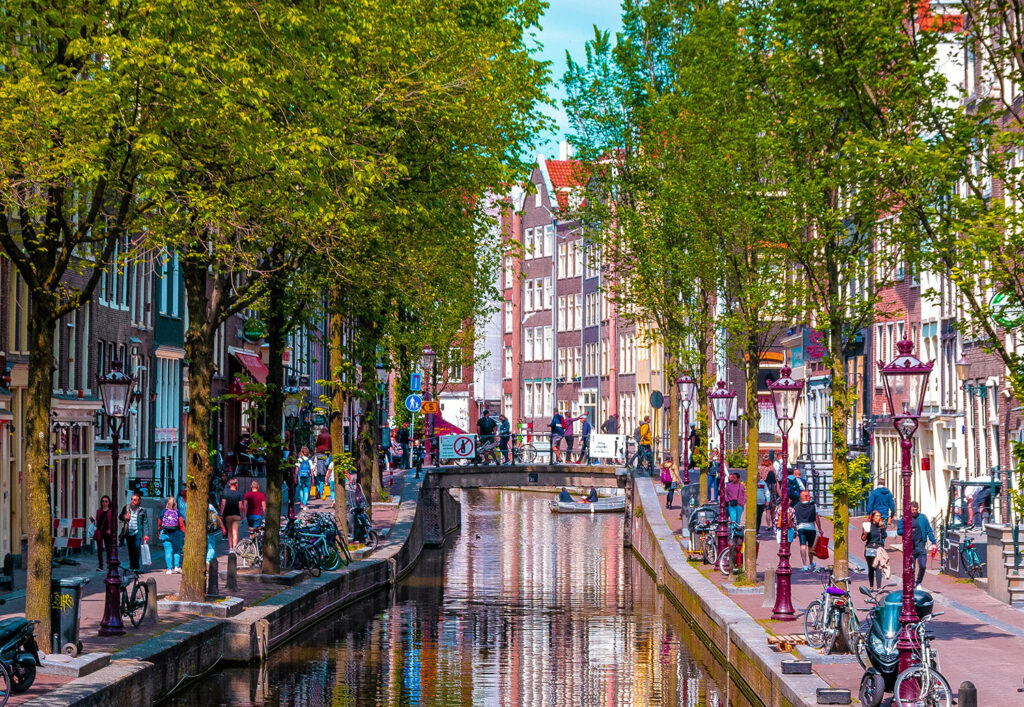
Staalmeestersbrug Bridge
Standing on the Staalmeestersbrug Bridge you have one of the best views in Amsterdam! The bridge looks out over the canal towards the great Zuiderkerk church. The bridge crosses over the Groenburgwal that connects the Raamgracht with the Amstel. This area of town was once the site of the Amstel fortress in the 16th century. Back then, it was also the textile district where you’d find the city’s cloth weaves, wool markers and clothing markets.
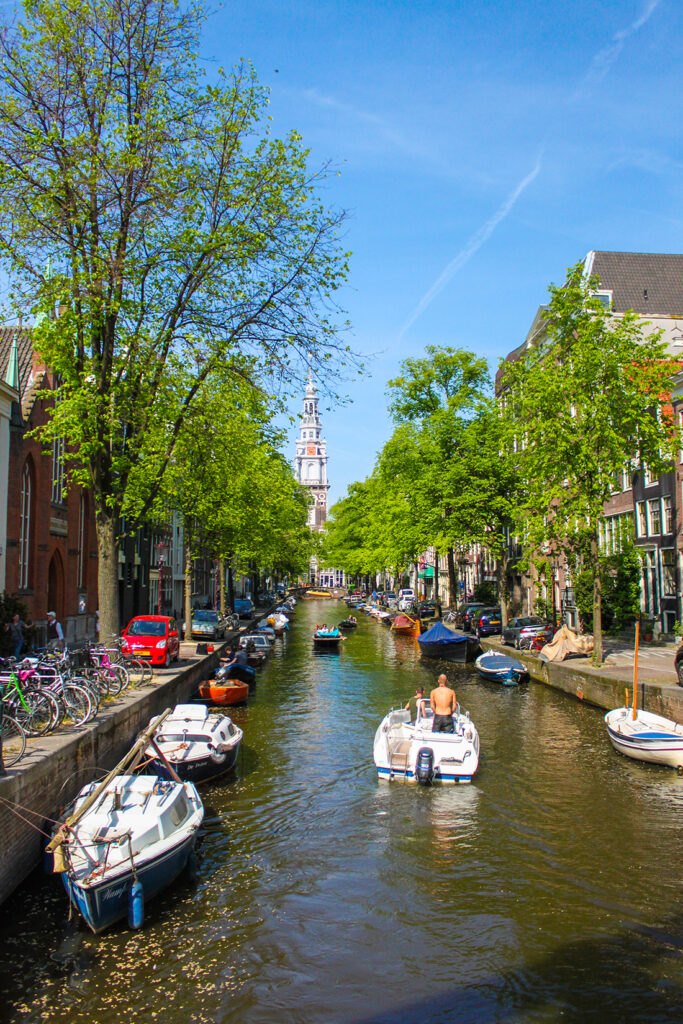
Bicycle racks
Cycling in Amsterdam is the most popular form of transportation in the city. Over 847,000 bicycles are being ridden in the city at one time; that’s 1.91 bicycles per household! To store all these bikes the city had to build colossal bicycle parking lots. You can now find these jumbled over the city. There is nothing more Dutch than a photo amongst the hundreds of bikes that fill the outskirts of the town! Head over to the Bicycle Parking at Central Station to get a bike photo with the magnificent train station in the background!
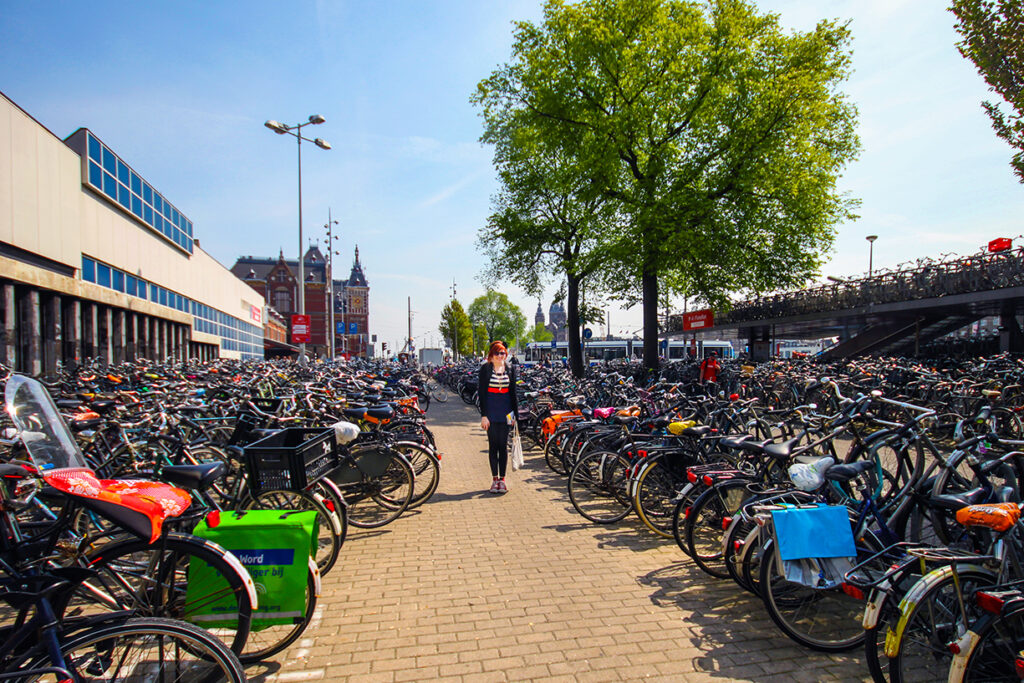
Prinsengracht Canal
Prinsengracht, or the Prince’s Canal, is one of the three primary historic canals in the city. And being one of Golden Age Canals means having the best real estate. The channel was named after Prince of Orange (an old medieval ruling title). My favourite spot for a photo op on the Prinsengracht is on the bridge parallel to the Amstel River. From here you get a shot looking down at the length of the Prinsengracht. Quirky and charming houseboats float on either side of the water and you can see the repeating bridges crossing far off in the distance.
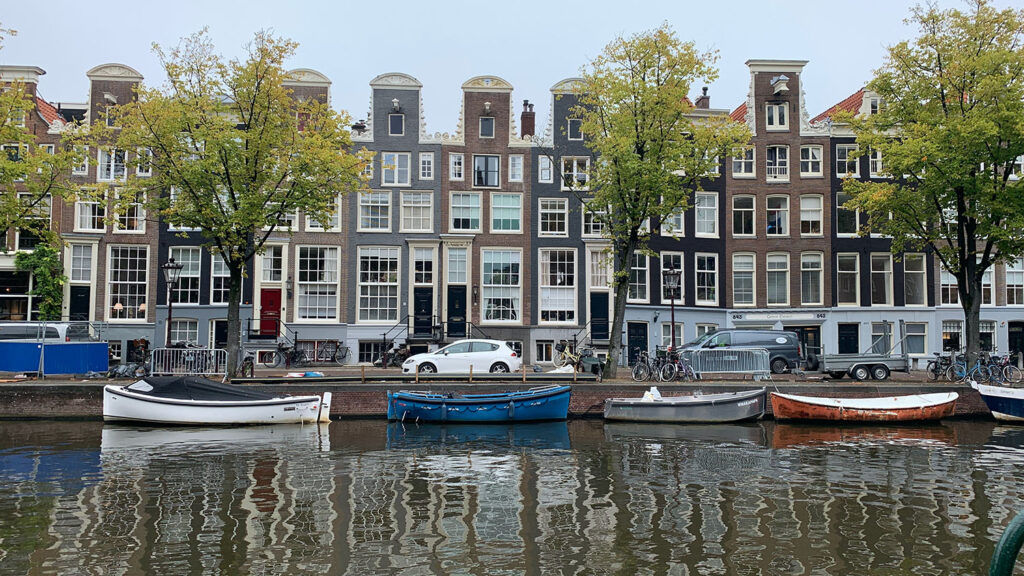
Night on the canal
Nighttime in Amsterdam means all the canals come alive. The stars, street lights and reflections of the buildings dance on the surface of the water. Nighttime transforms the streets into a new cavalcade of excitement. Fairy lights are strung up around the arches of the brides to highlight the design and keep boaters safe. It feels like there is no particular area that makes the best impression; simply wander around to find where your heart is calling!
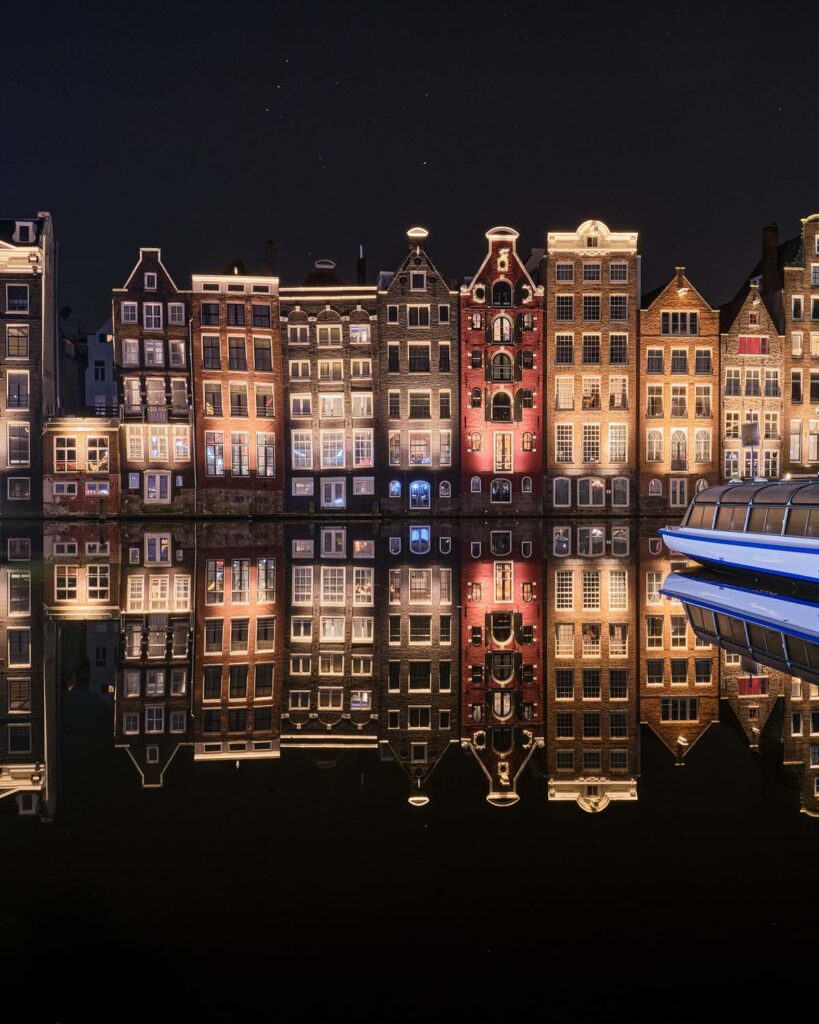
De Negen Straatjes
De Negen Straatjes or “Nine Little Streets” is the nickname of an area on the Canal Belt given to, you guessed it, nine important streets. The name of these streets is all very significant. Reestraat, Berenstraat, Wolvenstraat, Huidenstraat and Runstraat are all named after types of work carried out here in centuries past. And this part of town where were they would process animal skins to be turned into various products and clothing. The names of the streets correspond to the types of animals used for skins; deer, bear, wolf and cow. My favourite spot inside the nine streets is standing beside the bridge on Singel street. The view from here is so scenic, and best of all there are some lovely cafes along the side of the canal. Take a seat and enjoy some quality people-watching along with a beer or cup of coffee.
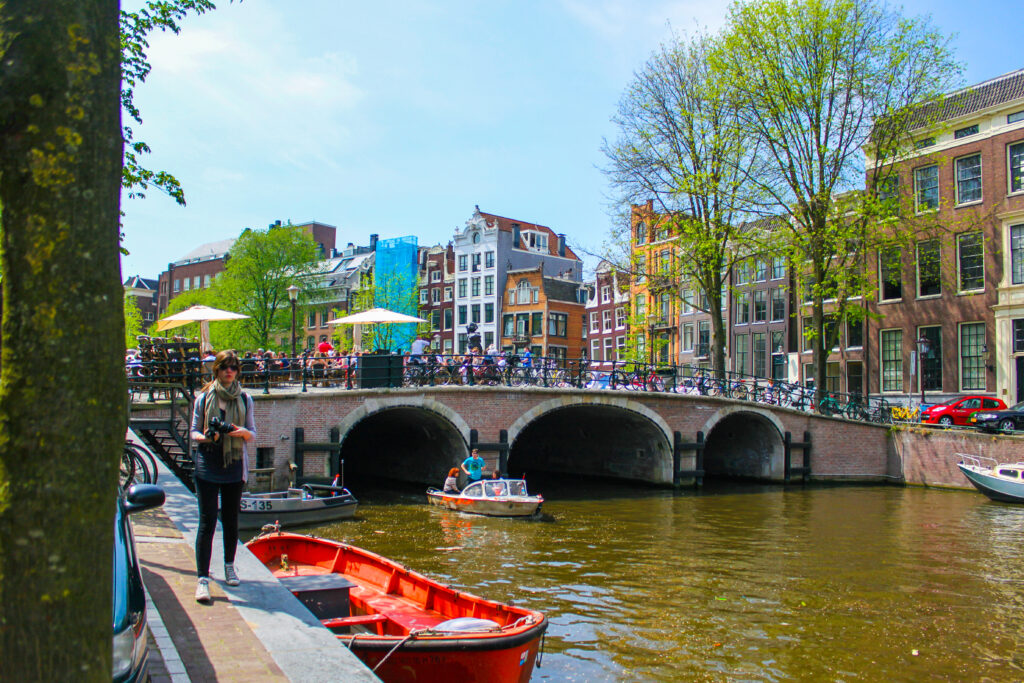
Herengracht
The Gouden Bocht (or the Golden Bend) is located on Herengracht, the second of four extensive waterways on the canal belt. This area is trendy for photographers as it is known for its large, elegant canal houses. Many of the houses here were built for some of the wealthiest and more prestigious inhabitants of Amsterdam. Everyone from regents to mayors and traders lived here. It was like Amsterdam’s Beverly Hills. Having a house here meant you were of the highest status!
Wind Mills
If you’re only in Amsterdam for a short time, you’ll want a picture with a windmill! Nothing is more iconically Dutch than a windmill. While most of them are found in the countryside, you can still spot a few within the city limits. Just a 30-minute walk from the central station is the old De Gooyer Mill. It is the tallest wooden mill in the Netherlands at 26.6 meters high. The structure dates back to 1609 and it’s amazing to see the industrious nature of these buildings designed even hundreds of years ago!
There is so much more to see and do in Amsterdam but this short guide is sure to help you find the most iconic locations to document your trip! Let me know in the comment what you’re favourite part of Amsterdam is or where you are most excited to visit.
Happy Travels, Adventurers.


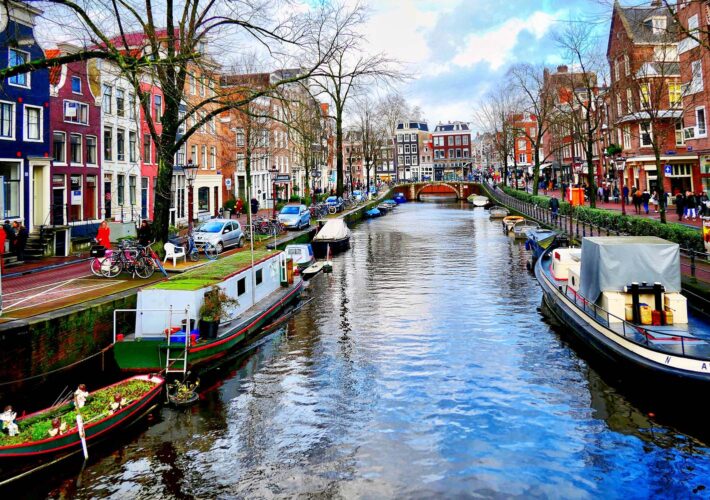
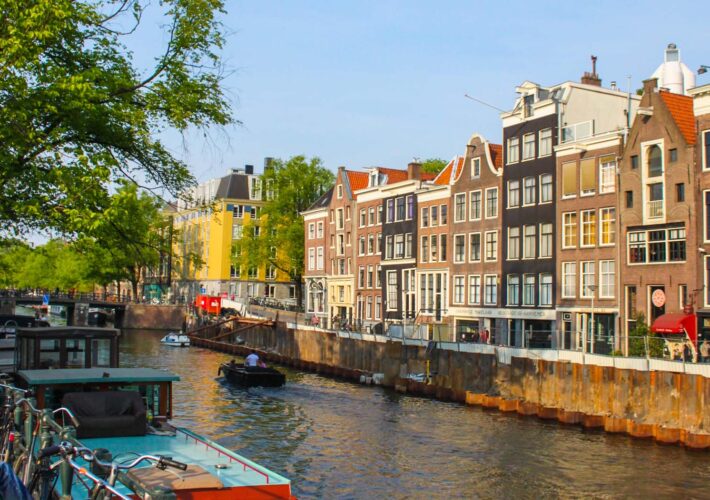
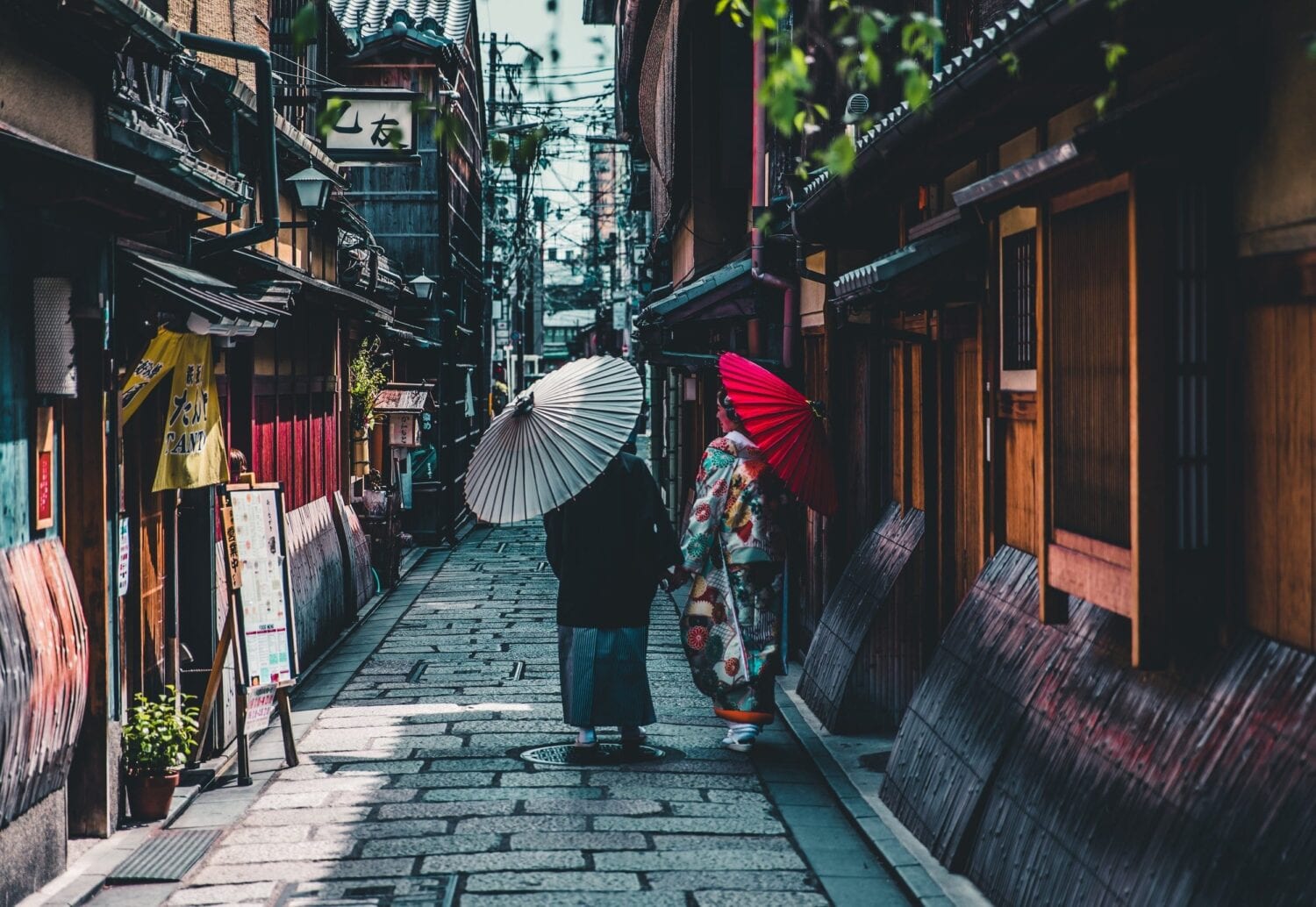
Leave a Comment